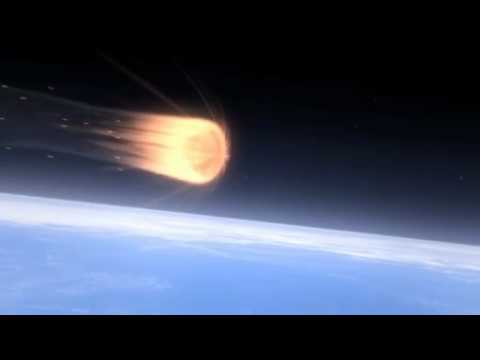NASA didn’t completely dump the idea of manned extra-terrestrial flight. It just needed some space. Before the agency resumes its manned missions sometime in 2021, NASA will need somewhere to put the astronauts. A new generation of reusable spacecraft, capable of zipping beyond the current limits. Something like the Orion Capsule.
Officially dubbed the Orion MPCV (Multi-Purpose Crew Vehicle), this craft is specifically built to travel far, far beyond Low Earth Orbit—like the Moon, Mars, or even deep space—then return safely home. NASA plans to use a fleet of these spacecraft for just about everything, from routine supply runs to the ISS to dropping a crew on a passing asteroid. Developed by Lockheed Martin Space Systems—coincidentally, also the builders of the Delta IV rocket that the Orion rides—the spacecraft is comprised of three primary subsystems.
Launch Abort System
NASA is dead serious about preventing another Challenger disaster. As such, the uppermost section of the Orion is dedicated to the launch abort system (LAS). This tower is designed to instantly detach and rocket the crew capsule to safety if something goes awry during liftoff. It also helps shield the crew from heat and pressure changes during the rise to orbit before popping off and falling back to Earth once the MPCV reaches altitude. Fun fact: the rocket-powered abort motor the LAS uses to separate is actually more powerful than the one employed to shoot John Glenn into orbit back in 1962.
Crew Module
If you are an astronaut aboard the Orion, this is where you want to be. The crew module sits between the LAS and the Service Module (aka the engine and life-support). Constructed of an aluminum-lithium alloy, it can hold up to six crew members along with all their scientific equipment and matched luggage.
It offers a range of improvements over previous capsules including a better-designed cockpit, more-powerful computers, indoor plumbing, and an emergency auto-docking feature. The glass cockpit is actually the same one that Honeywell designed for the Boeing 787. It takes over the repetitive monitoring tasks that Apollo crews used to have to continually check themselves. The auto-dock feature is exactly what it sounds like. Once in orbit, the on-board computers will autonomously rendezvous with other spacecraft rather than rely on humans to do it. However, the most exciting new feature—for the astronauts at least—is the inclusion of a “relief tube” in the capsule. Rather than crap in a plastic bag, as the Apollo guys did, the Orion will use a more discreet and sanitary system originally developed aboard Skylab.
Opposed to the Space Shuttles, with were each used over and over, the Orion crew module is only slightly reusable. Each one is expected to withstand ten flights before being retired. And, interestingly, the crew module has no landing gear—it is a water landing or nothing for the Orion.
Service Module
The service module is where the magic happens. Magic, meaning, the technologies that keep astronauts from freezing/exploding in the dark void. The service module is built of the same aluminum-lithium alloy as the Crew Module. It controls in-flight propulsion—generated by a “7500-pound thrust, pressure-fed, regeneratively cooled, storable bi-propellant, rocket engine made by Aerojet” according to NASA—and provides water and breathable air for the crew as well as prevents the control systems from freezing. It even has unpressurized cargo space for equipment and unlucky stowaways. And, while the LAS pops off just after liftoff, the Service Module remains connected to the Crew Module until the orbiter is ready to begin reentry.
In another American first, the Service Module will incorporate deployable solar panels to capture solar energy while in flight, much like the Mars Landers’ UltraFlex wings. This integration eliminates the need to carry heavy, unreliable fuel cells and all the necessary bits and pieces to use the fuel, which makes the Orion lighter and more agile.
The Big Test
All of these systems are currently coming together at the Kennedy Space Center ahead of a critical test flight scheduled for early 2014. Orion is expected to take off from Space Launch Complex 37, orbit the Earth twice at an altitude of over 3,600 miles—that’s fifteen times LEO—before reentering the atmosphere at 25,000 MPH splashing down somewhere in the Pacific. This, of course, will be an unmanned test flight.
“This flight test is a challenge. It will be difficult. We have a lot of confidence in our design, but we are certain that we will find out things we do not know,” Orion Program Manager Mark Geyer told the Orlando Sentinel. “Having the opportunity to do that early in our development is invaluable, because it will allow us to make adjustments now and address them much more efficiently than if we find changes are needed later. Our measure of success for this test will be in how we apply all of those lessons as we move forward.”
In addition, this flight will also put 10 other critical subsystems through their paces—including the parachute deployment system and the life support software. If the flight is sucessful, NASA may be putting more people on the Moon and reviving the aerospace industry by 2021. If it fails, well, that’s $375 million down the drain. [Physorg – NASA – NYC Aviation – The Orlando Sentinel]

